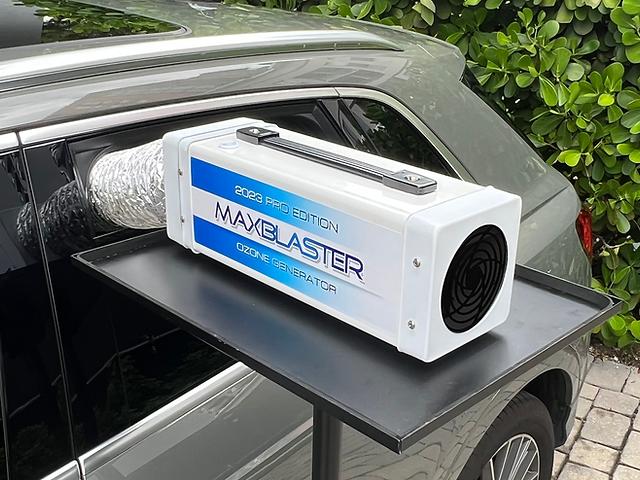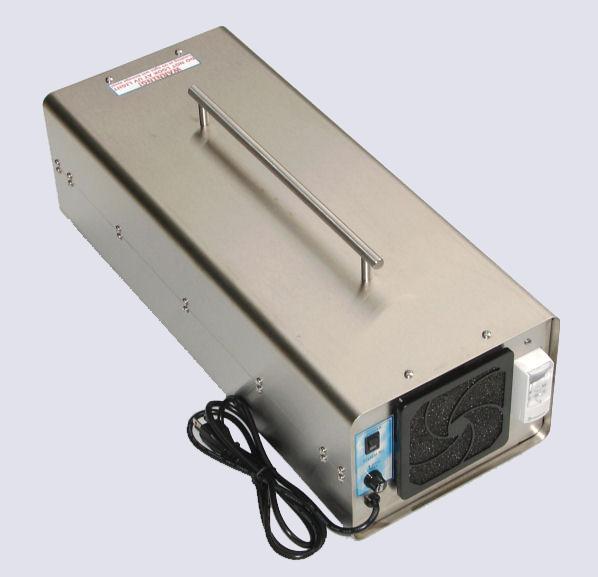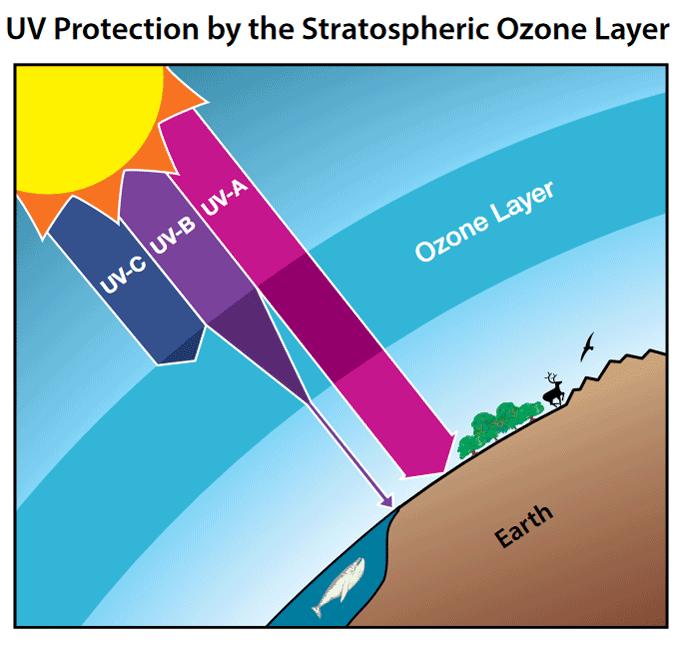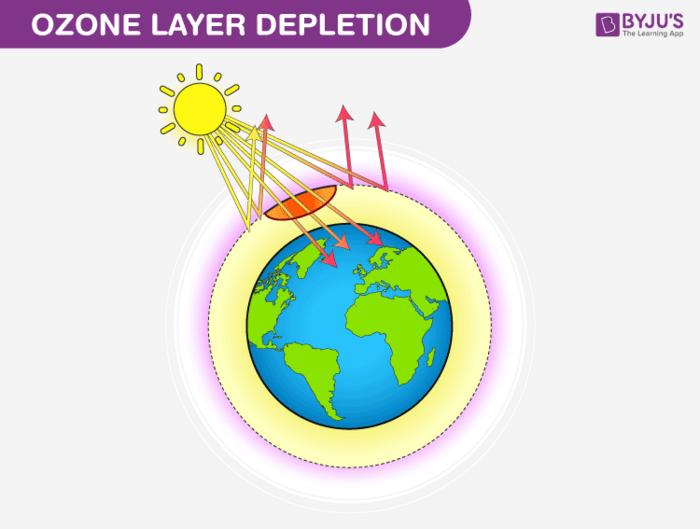I never imagined that what was advertised as a miracle odor remover would become my car’s worst enemy. As someone steeped in vehicle engineering, my expertise couldn’t save me from the costly mistake of using an ozone generator in my beloved car. With its promise to eliminate stubborn smells, I dismissed concerns that seemed exaggerated at the time. Little did I know, I was about to learn the hard way that these devices could wreak havoc on my vehicle’s interior and electronics. It wasn’t long before the damage was undeniable— electronics fritzing out and interior materials deteriorating faster than I could have ever anticipated. In this article, I will unravel the misconceptions about ozone generator car damage and detail the unexpected ozone generator effects on vehicles. Join me as I dive into why these supposed problem-solvers can lead to unintended consequences and what you need to know to avoid a similar fate.
What Are Ozone Generators?

As a former engineer, I’ve seen firsthand the marvels of technology, but I’ve also witnessed the misapplication of some gadgets that can lead to unintentional consequences. Let me introduce you to the fascinating, yet risky world of ozone generators. These devices are designed to eliminate odors and disinfect environments using ozone, a molecule composed of three oxygen atoms. It’s this third atom that gives ozone its potent oxidative properties.
Did you know that ozone is a powerful oxidant that can break down common materials in your car? Yes, that extra oxygen atom wants to bind with almost anything, which is why it’s so effective at eliminating odors. However, this aggressive nature means it doesn’t discriminate — it can also degrade car interiors.
Misunderstanding how these generators work can lead to irreversible damage. An ozone generator doesn’t just target pollutants; it can attack soft materials like rubber, leather, and even some plastics, breaking them down over time. This is a critical point of consideration for car enthusiasts and users who might see these devices as a quick fix for bad smells. My expertise and past experiences highlight that while ozone generators can serve their purpose, their potential to cause unseen harm is substantial, necessitating careful usage and a thorough understanding of their capabilities.
Who Is Affected by Ozone Generator Use?

Could your vehicle be silently deteriorating because of a popular air-cleaning device? As I discovered first-hand, ozone generators — touted for purifying the air and eliminating odors — can unwittingly become the culprits. My journey into this revelation began when I wondered why my car’s once-pristine interior was becoming a shadow of its former self. This wasn’t just an isolated incident. As I delved deeper, I realized that certain materials within vehicles are profoundly affected by ozone exposure.
With my extensive background in analyzing different car materials, I could quickly identify that particular vehicles are more susceptible to damage. Leather interiors, for instance, can dry out and crack, while rubber seals may become brittle, all due to the excessive oxidative impact of ozone. I’m not speaking from research alone; I felt the sting of these repercussions devalue my cherished possession — a stark reminder of the overlooked risks lurking behind these devices.
Understanding who is affected brings to light a broader perspective: car enthusiasts, regular commuters, or anyone relying on ozone generators for cleaner air are all at risk. I invite you to join me in unraveling these layers of risk by considering not just the device’s advertised benefits but its hidden costs as well.
When Do Problems Occur?

As someone who’s spent years navigating the intricacies of automotive design, I’ve learned firsthand that innovation can sometimes be a double-edged sword. Ozone generators promise to rid our cars of stubborn odors and potential allergens, but when do problems occur? What’s the tipping point where ozone goes from a cleaning agent to a damaging force?? It’s this fine line that many users cross unintentionally, and I’ve seen it too often.
The crucial issue isn’t the technology itself; it’s how and when it’s used. Based on my experience, problems commonly arise when the ozonation process — meant to sterilize and clean interiors — exceeds recommended exposure levels. This means running the ozone generator for too long or using it too frequently. While the intention might be to ensure a thorough cleanse, the elevated ozone levels start to attack essential materials within the car. That’s when leather loses its suppleness, rubber seals become brittle, and even electronics, delicate in design, start misbehaving.
In my journey, I’ve pinpointed that it’s not merely about knowing what these generators can do, but understanding the limitations of their use. It’s a lesson learned from countless consultations with car owners, each with tales of well-meaning solutions turning into costly automotive repairs. The key takeaway? Knowing exactly when your cleaning regimen is hovering dangerously close to damaging your well-tuned vehicle.
Where Does Ozone Damage Happen in Cars?

Ever wonder where ozone might be doing the most damage in your vehicle? Having spent years dissecting and rebuilding cars, I’ve seen firsthand how ozone can turn a well-loved machine into a deteriorating mess. My background in automotive engineering constantly reminds me that some car materials are simply more susceptible to ozone’s chemical wrath.
When I discovered the full extent of ozone’s destructive path in my vehicle, it was like watching a slow-motion train wreck. Starting with the delicate rubber seals around the doors and windows—these are prime targets for ozone-related decay. Ozone attacks these materials relentlessly, stripping away their elasticity until they become brittle and cracked. I’ve had seals crumble in my hands, their once reliable grip lost forever.
Moving inside the car, the situation didn’t improve. Ozone is unrelenting on artfully sewn leather and vinyl upholstery. Its presence can accelerate the aging process, leading to unsightly cracks that mar the interior’s elegance. I noticed discoloration and a diminished texture on my car’s leather seats, unsettling signs of an uninvited chemical invader at work.
In short, ozone damage favors weakness. It preys on those vital components that engineers like myself design for comfort and functionality. Understanding where this damage occurs has armed me with the essential know-how to safeguard my beloved vehicles from future ozone attacks, ensuring they remain both mechanically sound and aesthetically pleasing.
Why Does Ozone Cause Damage?

While working in material sciences, I’ve developed a keen appreciation for how chemical reactions can unexpectedly impact everyday materials. So, it’s no surprise that when I used an ozone generator to tackle persistent odors in my car, I didn’t anticipate the damage it would actually cause. Is it possible that the very method used to eliminate odors is harming your vehicle instead? As I learned through my own experience, the answer is a resounding yes.
Ozone is a remarkably reactive molecule, easily breaking down bonds in organic materials, which are abundant in vehicles. The seats, dashboard, and even electronic components all contain materials vulnerable to this oxidative assault. When ozone infiltrates these areas, it initiates chemical reactions that degrade plastics and rubbers, leading to cracking, fading, and even malfunction of electrical parts. My engineering background taught me that while ozone is powerful for neutralizing odors, its aggressive nature can drastically alter the molecular structure of vehicle interiors.
The irony lies in ozone’s intended use—while it’s excellent at neutralizing smells by breaking down odor-causing molecules, it doesn’t distinguish between those and the essential materials of your car. So, my advice, grounded in a blend of professional insight and personal missteps, is to approach ozone generators with caution. Understanding this makes it easier to foresee the potential risks, ensuring that what keeps your car smelling fresh doesn’t end up causing more harm than good.
How to Prevent Ozone Damage to Your Car

My adventure into the world of ozone generators began innocently enough—I thought I had found a magic solution to a lingering odor problem in my rarely-driven Jeep. Little did I know that the trade-off would involve potential damage to interior materials like rubber and plastics. From that daunting experience, I came away with several lessons on maintaining the integrity of my vehicle despite these powerful machines.
What proactive steps can you take to protect your car from ozone-related damage? It starts with understanding the nature of ozone and its impact. Despite their benefits, ozone generators can be fierce adversaries if left unchecked. I learned that limiting their use to an absolute necessity is crucial. Whenever I use one, I ensure that every surface susceptible to damage is protected. Draping plastic over the dashboard and seats, and taping over sensitive electronic displays, creates a barrier against any potential harm.
Ventilating the space thoroughly post-treatment is another essential strategy. This not only rids the excess ozone but also helps in quickly returning the environment to a safe, vehicle-friendly balance. Furthermore, consulting the vehicle’s manual for any ozone-related warnings has become part of my routine before attempting such endeavors.
Armed with this practical insight, I maintain my car’s condition and steer clear of the pitfalls that once caught me off guard, hoping others can learn from my tale and keep their rides pristine.
User Experiences and Testimonials

When I delved into the world of ozone generators, I didn’t anticipate the surprising tales I’d uncover from car owners. It’s fascinating, really, the array of real-world experiences that illustrate the critical question: What have other car owners experienced after using ozone generators? Through my research and conversations, I discovered a pattern of unforeseen consequences that resonated with my own story.
One owner shared how the device, meant to eradicate odors, actually damaged her car’s interior. She recounted the discoloration of her dashboard and deterioration of seat materials. Another driver was taken aback when electronic components began malfunctioning post-treatment. These accounts align with my experience, when an ozone generator left my car interior brittle and unrecognizable, turning a well-intended solution into regret.
These experiences highlight the risks often overlooked in glossy product descriptions and enthusiastic reviews. When the allure of an ozone generator beckons, it’s easy to miss the fine print — practical ramifications that surface once activated within the confines of a car. Through their stories and my own, I’ve learned the importance of seeking comprehensive, experiential insights before making choices that affect the vehicle we rely on every day. Let these shared experiences guide our understanding of ozone’s potential pitfalls and safeguard our beloved cars from unintended harm.
FAQs
Why Can an Ozone Generator Ruin a Car?
Ozone generators produce ozone, which can react with materials in your car, such as rubber, upholstery, and plastic, leading to their deterioration over time.
What Parts of a Car Are Most Affected by Ozone Generators?
Components like rubber seals, leather seats, and electrical wiring insulations are particularly susceptible to damage from prolonged exposure to ozone.
How Does Ozone Affect the Air Quality Inside the Car?
While ozone can neutralize odors, excessive levels can be harmful to breathe and can lead to indoor air quality issues, including respiratory irritation.
Are There Safer Alternatives to Using Ozone Generators for Car Odor Removal?
Yes, using activated charcoal, baking soda, or professional detailing services are safer alternatives for removing odors without the risk of damaging car materials.
What Precautions Should Be Taken If Using an Ozone Generator?
If you choose to use an ozone generator, follow manufacturer instructions carefully, limit exposure time, and ensure the car is well ventilated post-treatment to minimize potential damage.
Conclusion
Is it worth risking your vehicle to achieve a clean, odor-free environment? As I discovered, the answer is a resounding no when it comes to ozone generators. My experience with these devices unveiled a stark reality: while they promise freshness, they come with hidden dangers. Ozone generator effects on vehicles can be devastating, often causing unforeseen damage that goes beyond just removing odors.
Through my engineering career, I have learned the importance of evaluating risks and benefits thoroughly. Ozone generator safety warnings are not to be taken lightly, especially when it comes to automotive interiors. In hindsight, I realized that my car’s exposure to high ozone levels led to deteriorated materials and compromised functions, illustrating why detailed research and heeding safety guidelines are critical.
Ultimately, balancing cleanliness with automotive care requires informed decisions. I hope sharing my experience helps others avoid the costly lessons I faced when seeking a pristine environment at the expense of my vehicle’s integrity.